Back to top: Depositional history
Introduction
This section outlines the depositional history as we understood it while romoving the soil covering the structures and after reviewing the stratigraphical reletions of the individual features and materials found within them. This interpretative section is the result of long discussions with the excavation directors Giorgio Buccellati, Marilyn Kelly-Buccellati and Federico Buccellati and all the field members of our excavation teams from the 2008-2009 seasons and the study season of 2010.
J6 is the eastern limit of the Temple Terrace. It is defined by the revetment wall and the east staircase wall. The elevation in J6 is higher than elswhere in the JP area. J6’s morphology is characterised by a slope which, during the Early Dynastic III Period, reaches its highest point directly south of the revetment wall at 91.00, and its lowest point at the plaza level at 87.00. Early Mittani levels are found on top of strata from the late Third Millennium. The early Second Millennium is here not attested, even though there are structures dated to this period south of J6 in Area C2 and we found a lot of Khabur ceramics mixed in Mittani strata. The absence of Khabur levels can be attributed to the slope that is characteristic of the J6 morphology, leading to the erosion of the intermediate strata.
This section is more interpretative than the section chronometry, in which the stratigraphic sequence, i.e. the clustering of elements according to their contact association. The main events that affected J6 are grouped into 7 stages. For each stage there is a description with a schemathic section. The schemathic section shown below is a combination of several east sections drawn in J6.
LINK TO STAGE IN GRAMMAR
.
Back to top: Depositional history
Stage 7 - Post abandonment (Middle Mittani-Assyrian-Modern)
From the middle of the Mittani period onwards this part of the Temple Terrace was abandoned: a thick layer of natural accumulations (light blue) with collapsed stones cover all this portion of the tell. The lower levels of accumulations presents a good quantity of ceramics and objects, so that human presence in the area is attested. In the adjacent areas we record new modification and use phases at the Temple Terrace (especially J2, J3 and J5).
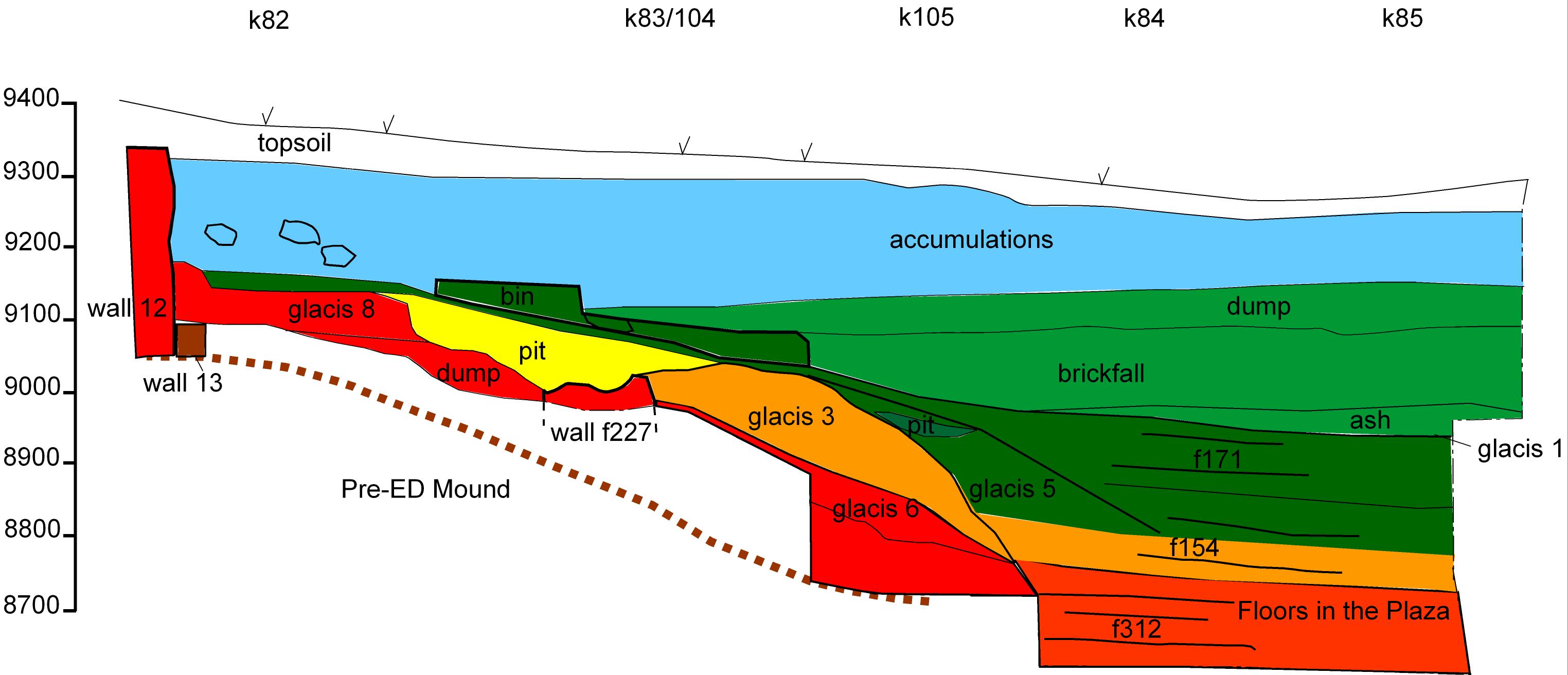 stage 7
stage 7
Back to top: Depositional history
Stage 6 - Great brickfall (Middle Mittani)
During the middle of the Mittani period (light green) the area was covered with a thick layer of soil containing a large number of sherds, pebbles and stones. Immediatly preceding this, there was a collapse of buildings coming from the southeast of J6. The brickfall covered the glacis and the bin a7. This spread to the west, covering the plaza directly in front of the monumental staircase. The reason for the collapse is unknown, but a fire occurred just before it happened. We found a thick layer of ash under the brickfall: it is possible that the area burned and the structures then collapsed. The brickfall blocked the eastern side of the plaza, which was an open space in front of the Temple Terrace until then. This area had been kept clean and free during the Third Millennium until the early Mittani.
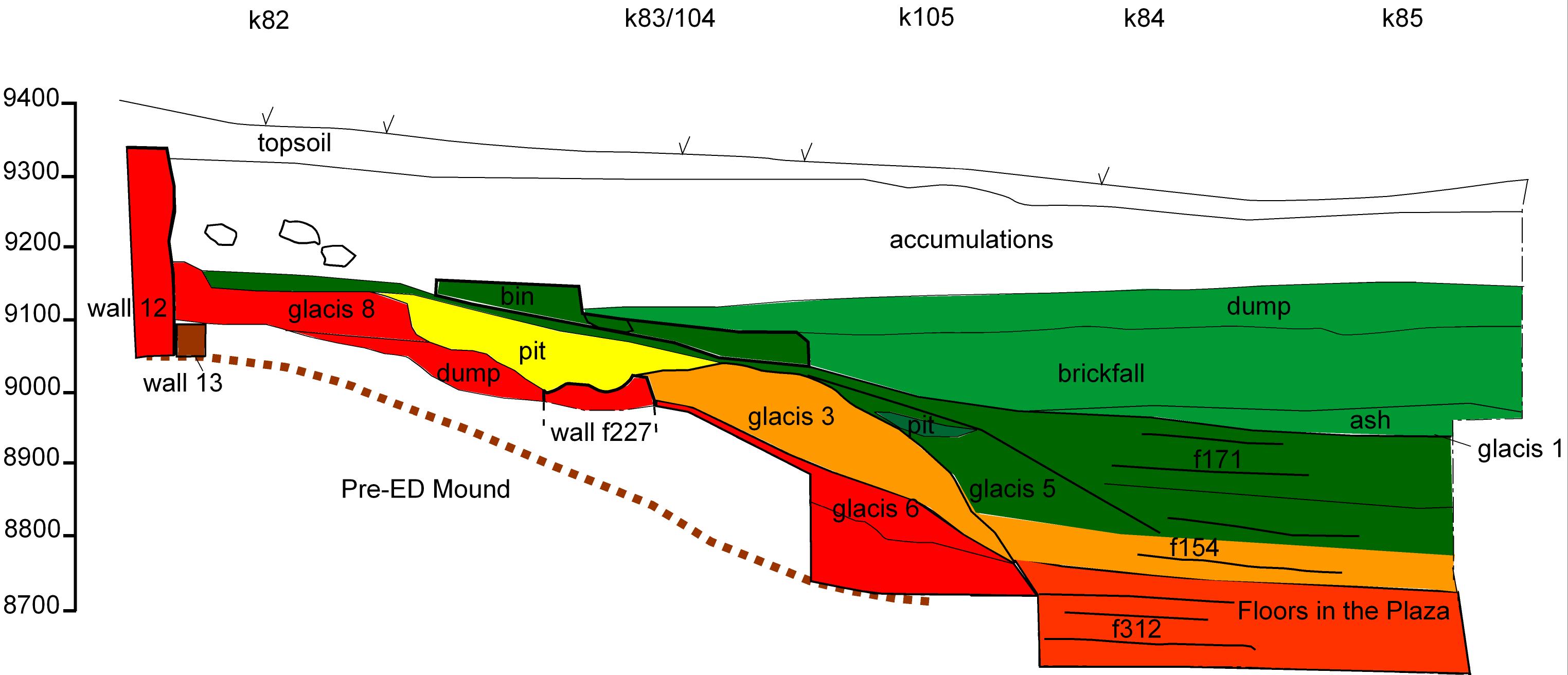 stage 6
stage 6
Back to top: Depositional history
Stage 5 - Reorganization of space (Early Mittani)
At the very beginning of Mittani (indicated here in green) the Plaza was used intensively, as evidenced by the series of floors we found (f171). A thick, wet, organic layer containing plenty of pottery sherds and some charcoal and ash (glacis 5) was laied on top of glacis 3 with the same function of protecting the east side of the staircase flank wall. The glacis is cut by a pit. The rapid growth of sedimentation in this portion of the settlement indicates the presence of structures to the south and east of the plaza. The area is then levelled and covered with a homogeneus hard surface gently sloping to the south east (glacis 1). Wall f201 is placed on top of the glacis in the same position of wall f227 and is used as base for the half-moon-shaped mudbrick bin a7. The bin had storage purposes and is the last evidence of activities in J6. It was found empty and several floors are associated with it.
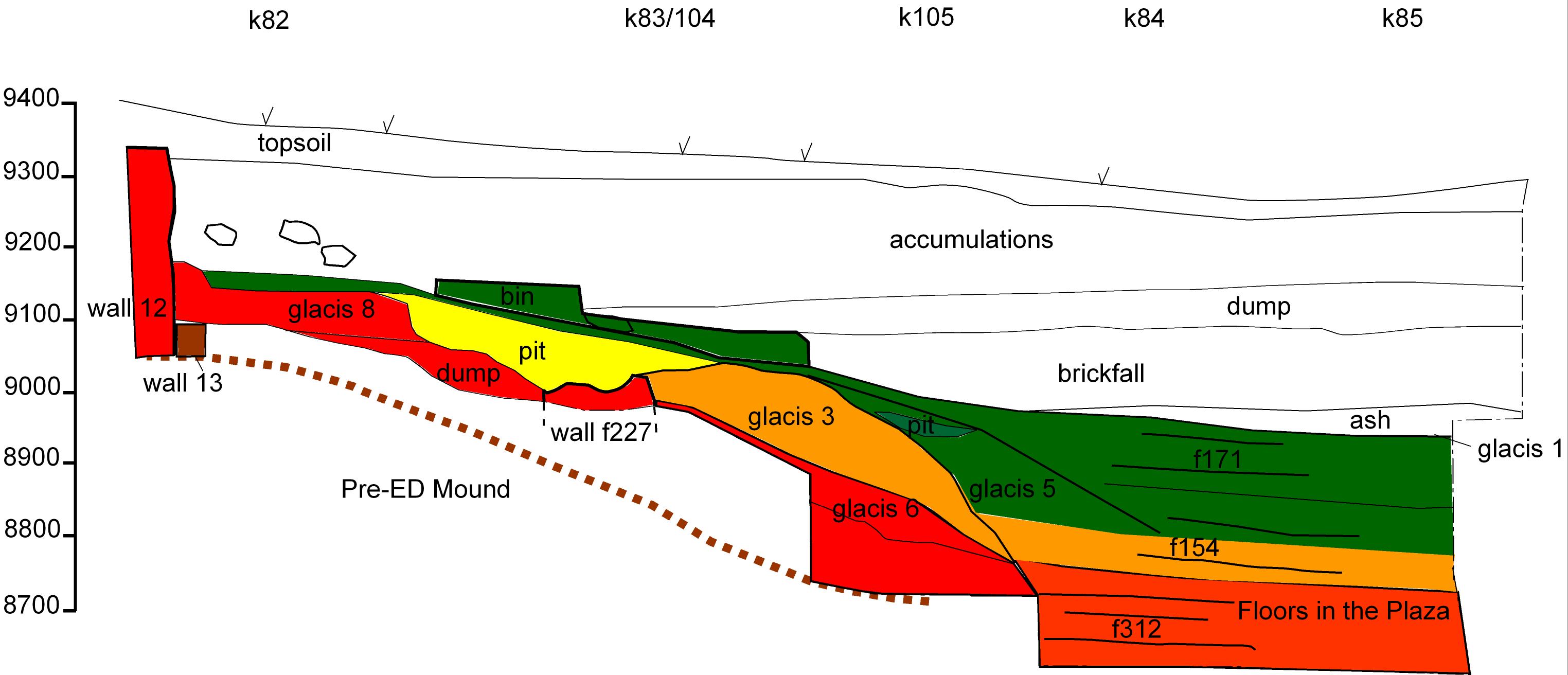 stage 5
stage 5
Back to top: Depositional history
Stage 4 - Pit (Ur III)
During this stage (yellow) a shallow pit f200 filled with ashes, carbon and large sherds cuts through glacis 3 and glacis 8, and removes the upper rows of wall f227. The function of the pit must to be considered in relation to activities at the Temple Terrace and Plaza, given its proximity to the monumental staircase.
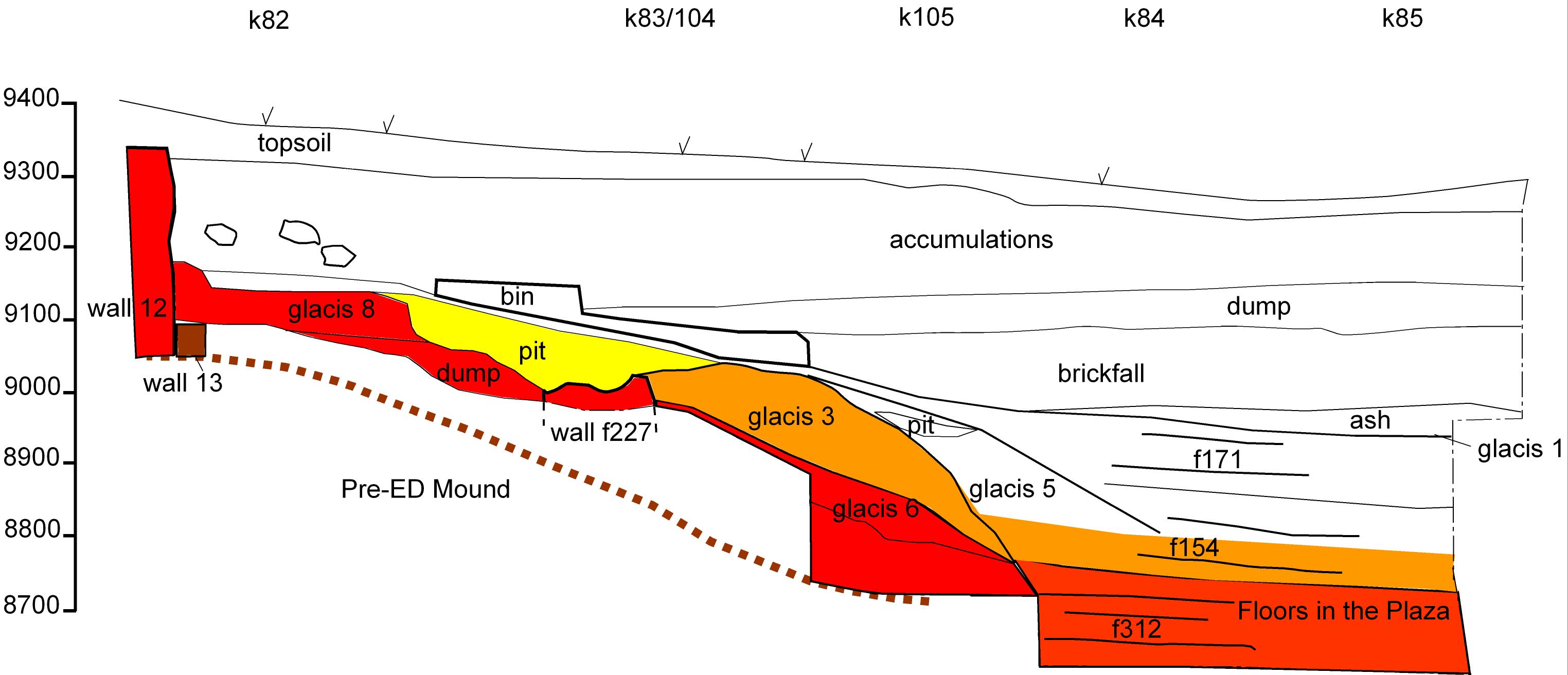 stage 4
stage 4
Back to top: Depositional history
Stage 3 - Glacis (Akkadian)
An thick band of earth and bricks (here in orange) glacis is dumped east of the staircase flank wall and on top of wall f227. Floor f154 was found in front of the staircase flank wall, attesting the use of the staircase and Plaza at this time.
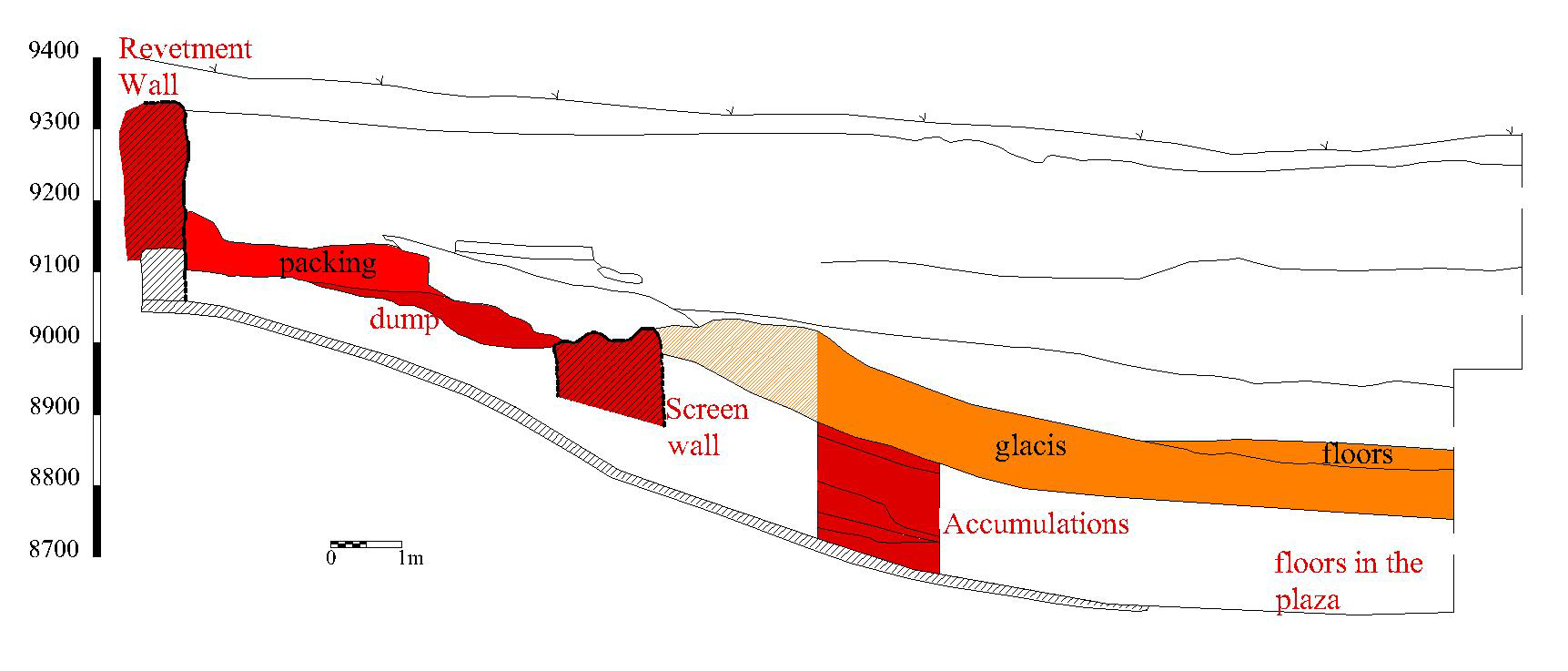 stage 3
stage 3
Back to top: Depositional history
Stage 2 - Main construction phase of the Temple Terrace (Early Dynastic III)
The EDIII period, highlighted in red, is a phase characterised by a wealth of activity at the Temple Terrace. This period also encompasses the major construction phase of the Temple Terrace, during which great monumentality was achieved. To the north is wall 12, which marks the eastern boundary of the Temple Terrace. The monumental staircase was constructed alongside flank wall 6. This wall was built directly on top of the mound surface of stage 1. A dump and glacis 6 were laid south of wall f227 and east of wall 6. During this period the area to south of the staircase, the Plaza, was used intensively: several floor surfaces were found both in J2 and J6 (floor f312 identical to J2f359, see v138).
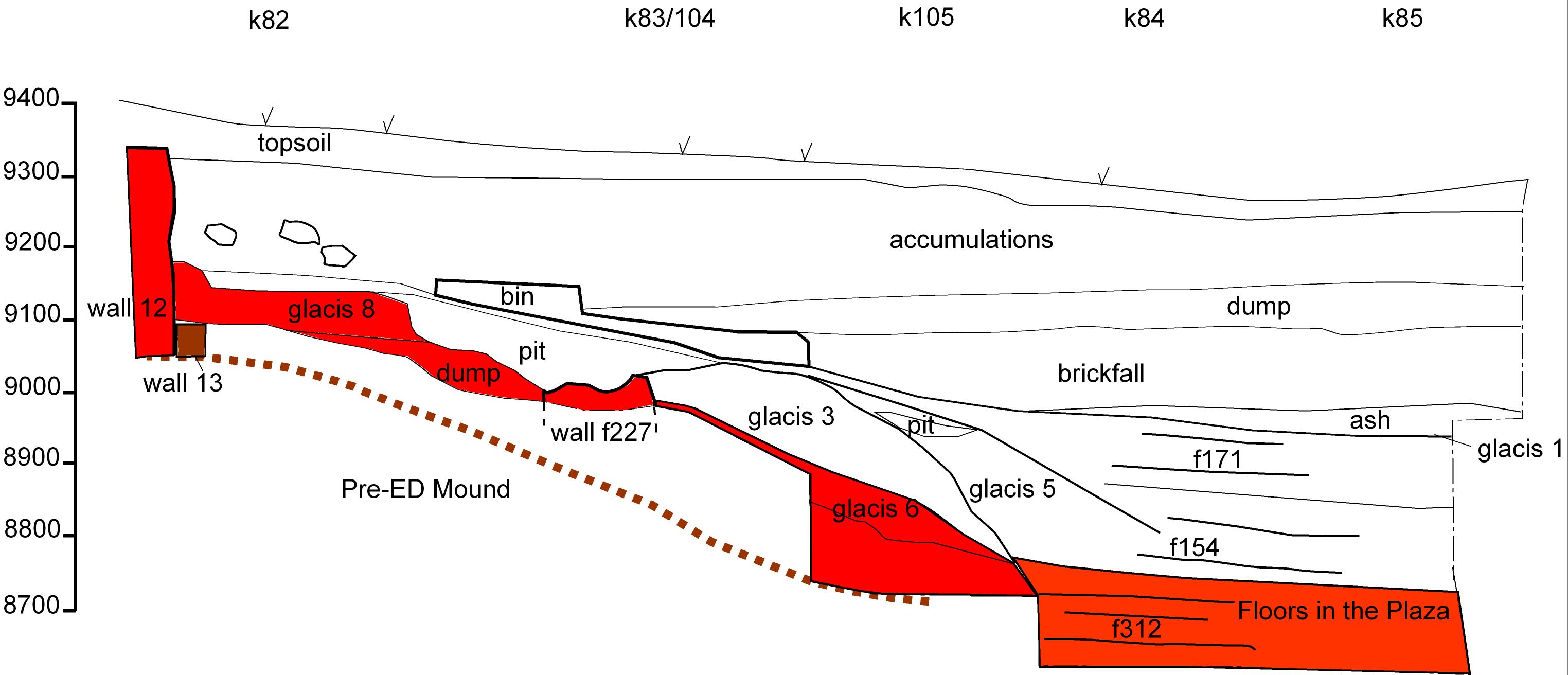 stage 2
stage 2
Back to top: Depositional history
Stage 1 - Traces of a pre-EDIII mound (Late Chalcolithic)
Only a few elements in J6 suggest the presence of a pre-EDIII stage. Other JP units provide evidence that the Temple Terrace has Ninivite V and Late Chalcolithic III phases (units B6, J3, J1 and J2). In J2, three steps underlie the monumental staircase and it is tempting to attribute these steps to an earlier, similar structure. In J6, a series of surfaces sloping southeast, indicated in brown, are located under the staircase flank wall 6. Mudbrick wall 13 may represent a structure from this early period.
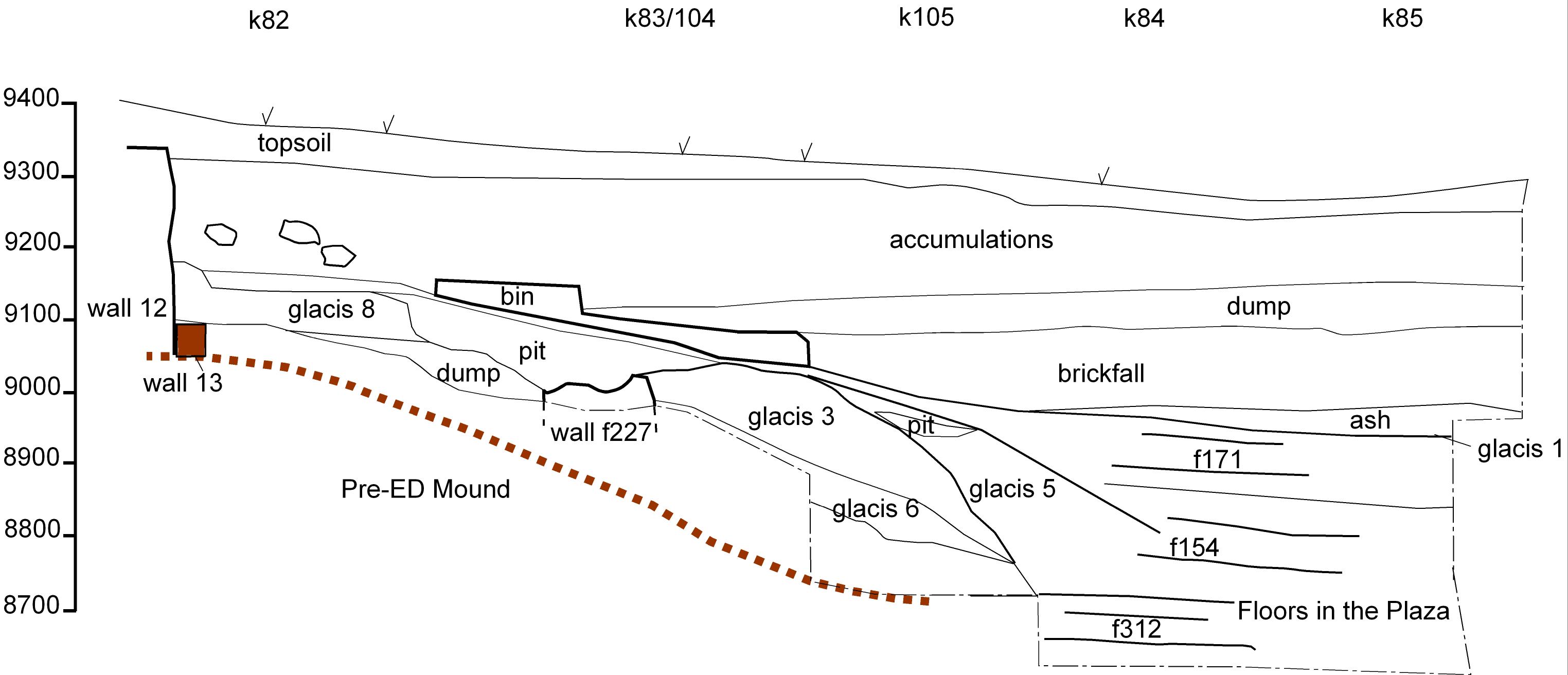 stage 1
stage 1
Back to top: Depositional history